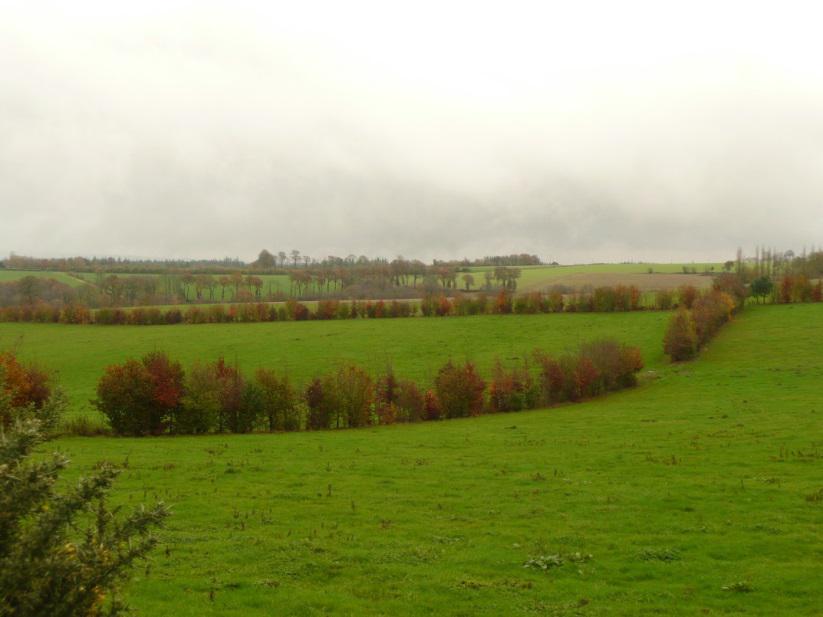3 December 2014
Reviewing CAP support (2007-13) for hedgerow agroforestry in the “Atlantic” biogeographical zone of Europe
In the AGFORWARD project, one of the stakeholder groups is focusing on the hedgerow systems of Brittany in France. Rosa Mosquera-Losada (University of Compostela de Santiago) and Jabier Ruiz-Mirazo (European Agroforestry Federation) have also been reviewing recent European Union support for agroforestry with a focus on hedgerows. In this item, they describe some of the initial findings.

Between 2007 and 2013, the second pillar of the Common Agricultural Policy (CAP) allowed national or regional governments to support agroforestry systems through rural development measures, such as Measure 222 (First establishment of agroforestry systems on agricultural land). In practice about 20, out of a total of 88 regions, adopted this measure in their Rural Development Programme, but the uptake was low. In fact it appears that most of the support for agroforestry systems occurred through Measure 214 (Agri-environmental schemes) and Measure 216 (Support for Non-productive investments).
The types of agroforestry supported in agri-environmental schemes included i) hedgerows, ii) isolated trees, iii) forest strips and small stands, iv) grazed or mowed orchards, and v) forest understory grazing. It is possible to categorise Europe into different biogeographic zones; the Atlantic biogeographic zone includes Northern Spain, Western France, the British Isles, the Netherlands, and parts of Denmark, Belgium and Germany. In this zone, hedgerows were probably the type of agroforestry that received most CAP support. The definition of eligible hedgerows and the associated management requirements varied greatly between countries. The annual amount of support was usually below €1 m-1, ranging from €0.07 m-1 in Ireland (with a ceiling of €400 per year on arable farms) to about €3 m-1 in the Flanders part of Belgium. In most cases, the use of native species in hedgerows was a requirement. In France, multi-strata hedgerows, containing species with different flowering and fruiting seasons, were recommended. In Northern Ireland, at least five native woody species for each 30 m of hedgerow were requested to qualify for hedgerow planting aids.
Some of the management requirements gave special attention to hedgerow trees, usually with the objective of increasing their numbers or enhancing their protection. In this regard, England paid about €1.48 per tree to tag trees in hedgerows and facilitate their establishment. Across all RDPs, hedgerow maintenance operations (such as trimming, coppicing, and laying) were generally restricted to winter months. It was common to forbid hedge cutting on both sides more than once every two years or to trim more than one half of a length of hedgerow in any one year. In the case of enhanced maintenance hedgerows in England or biodiversity payments related to hedgerows in Scotland hedge trimming was restricted to trimming less than one year in three, or less than one third of a hedgerow length per year. The use of fertilisers, pesticides and herbicides (the latter with some exceptions) near hedgerows was banned in most regions for farms receiving payments for hedgerow maintenance.
In some RDPs, support was also offered for hedge restoration. In some cases, such as Wales, the support offered was low and generic (about €3.55 m-1). In others each operation was assessed separately. For example in Ireland, support was available for coppicing (€5 m-1), laying (€8 m-1) and planting (€32 m-1). In England, there was support for restoration (about €10.36 m-1) and planting (€7.40 m-1), with a €3.56 m-1 supplement for top binding and staking or when substantial pre-work was required. In Northern Ireland, hedgerow regeneration and planting received support ranging from €8.90 m-1 to €17.80 m-1, depending on the fencing required. In several RDPs specific requirements were set to qualify for hedgerow restoration aids e.g. planting in a double staggered row (England), following contours of the original field boundaries (Northern Ireland) or avoiding plastic mulching (France).
For further information on this study please contact Jabier Ruiz-Mirazo